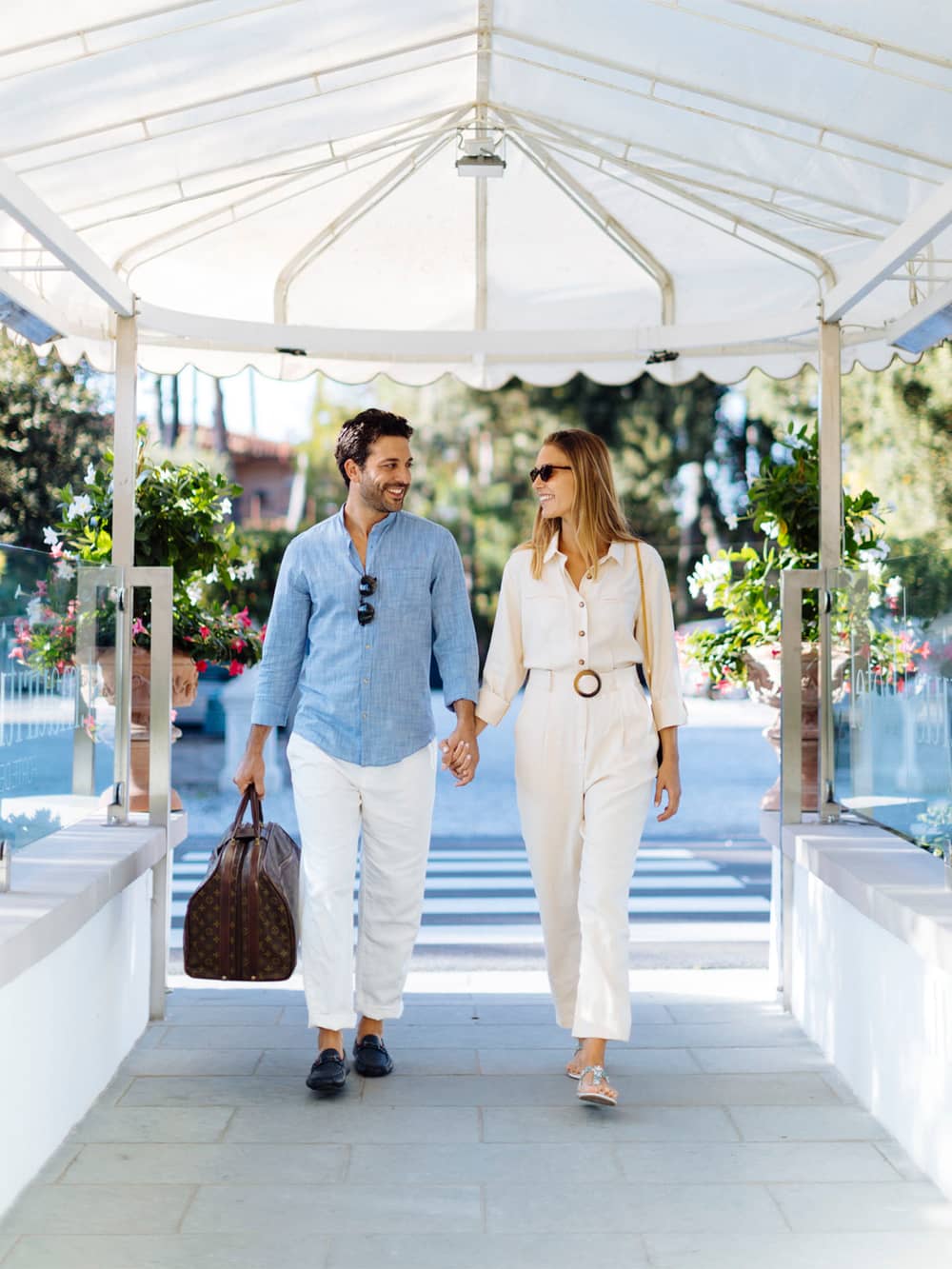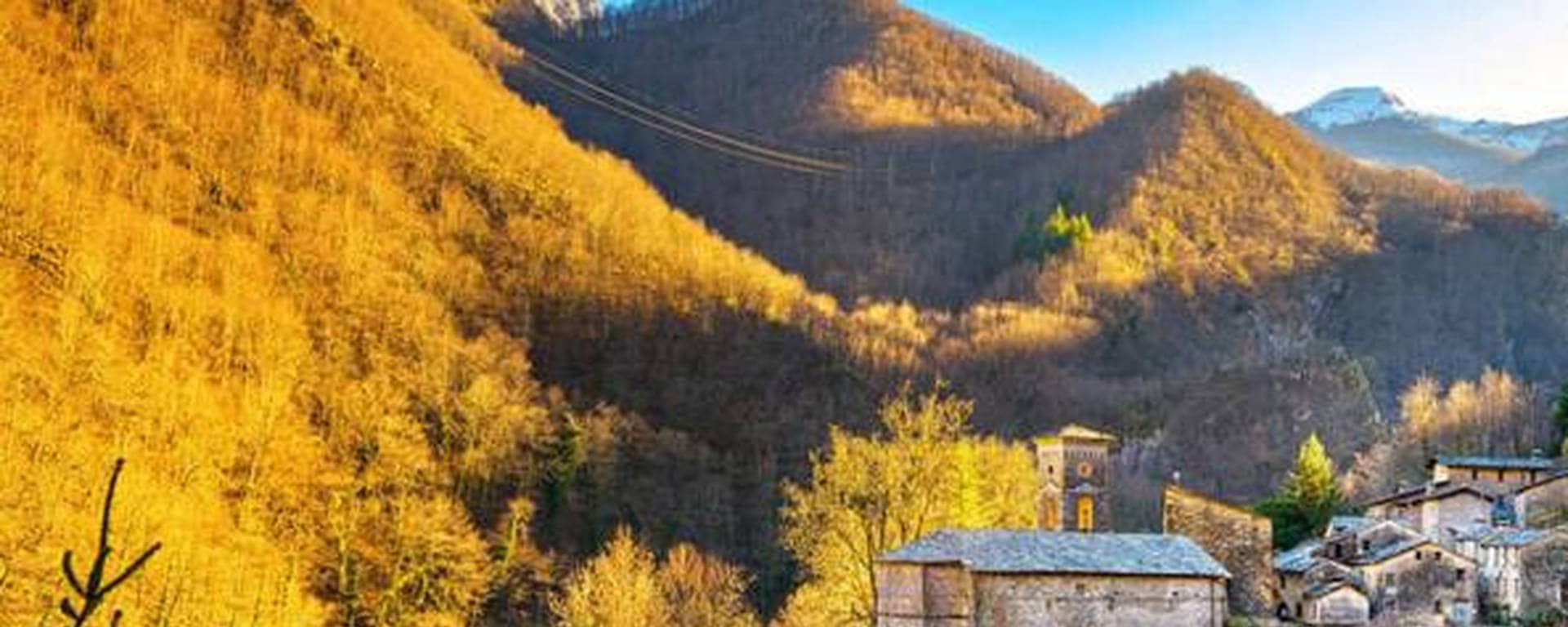
Forte dei Marmi

VIP Guest:
only if you book from this site
Guaranteed
When you arrive
throughout your stay
Free parking
Sciabola Restaurant, beverages not included
Book now
Book your stay at Hotel St.Mauritius
The majestic Apuan Alps frame the splendid Versilia. Beyond them, about an hour's drive from Forte dei Marmi, lies the beautiful territory of the Garfagnana, a land rich in medieval villages, imposing fortresses, spectacular caves and nature reserves. What are the absolutely unmissable destinations, located a short distance from each other, in this part of the Lucca area? Let's find out together through an itinerary.
Starting from the St. Mauritius Hotel, through the highway, we head towards Lucca. Once reached, we continue towards the Garfagnana and our first stop: the famous Ponte della Maddalena, better known as Ponte del Diavolo which connects the banks of the Serchio river. Erected in the fourteenth century at the behest of the Countess Matilde di Canossa near Borgo a Mozzano, due to the engineering work that seemed to many of the time to be impossible to achieve, it was attributed to the devil.
From there, we turn towards the Botri ravine, a spectacular limestone gorge located on the slopes of the Tre Potenze and Rondinaio mountains. The steep and steep walls, which offer an ideal place to nest eagles, are carved out of the waters of the Mariani and Ribellino streams, which join together to create the Rio Pelago. The reserve is open from June to September.
A castle and, around it, protective walls: this is the conformation of Barga, considered by Pascoli as his adopted country. There are two entrances that have survived to this day, that of Porta Reale and that of Porta Macchiaia. The city, during the Middle Ages, was well known for the local production of silk threads, thanks to the presence of mills that exploited the water energy of the surrounding streams. Part of the production was then exported to the surrounding cities, including Florence. Do not miss the historic buildings in the center, such as Palazzo Balduini, Palazzo Angeli, Palazzo Pancrazi and Palazzo Podestà; not least are the churches, that of the Most Holy Crucifix and that of the Most Holy Annunciation, within which prestigious works of art are preserved. Also the Duomo, known as the collegiate church of San Cristoforo and among the best examples of Romanesque architecture in Tuscany, constitutes an element of primary interest, together with the Casa Pascoli and the Teatro dei Differenti, within which the writer gave his speech in favor of the Libyan War.
Another stop is Gallicano, which was given the name of a Roman soldier, "Cornelius Gallicano", although the country we admire today undoubtedly dates back to medieval times. Surrounded by two walls, one of medieval origin, the other of Renaissance origin, the oldest building is the Pieve di San Jacopo, with an extraordinary Romanesque facade. Inside, a terracotta Madonna and Child with Saints from the Della Robbia workshop contribute to making the building a real gem.
Along the Torrente Turrite, near Vergemoli, there is the Hermitage of Calomini, a sanctuary almost entirely carved out of the rock. The origin of the sanctuary is shrouded in a fascinating mystery. In fact, legend has it that it was the Marian apparition to a young shepherdess from Campolemisi, around the year 1000, who inspired this construction. The building is one of the few examples of rock construction in Garfagnana. Once guarded by the hermits of Calomini, it is now under the guidance of the Capuchin friars of Lucca.
The Grotta del Vento is one of the most spectacular karst caves belonging to the Apuan Alps, which winds through a system of caves through the Pania Secca. Located about 500 meters above sea level, the current conformation was created by the rain and snow that penetrated the rock. The large amount of carbon dioxide present in the area slowly mixed with the limestone rock, thus giving life to all the bizarre forms of erosion present inside, which contribute to its reputation. To get to the cave, you need to travel a mountain road that starts from Gallicano.
Near Gallicano, Castelnuovo di Garfagnana is a village most famous for the Ariostesca fortress, which over the years has become a true symbol of the country. The imposing defensive structure dates back to the 12th century, which was subsequently enlarged with the addition of the tower, terrace and door that limited access to the city. The name of the building overlooking Piazza Umberto I derives from the famous Italian poet Ludovico Ariosto, who ruled in the provinces of the Garfagnana from 1522 to 1525. Another object of considerable interest on the part of tourists visiting Castelnuovo di Garfagnana is without a doubt the Cathedral, which houses a precious altarpiece of San Giuseppe and a Black Christ. The nearby Teatro Alfieri, inaugurated on the evening of August 22, 1860 with the melodrama "La Straniera" by Vincenzo Bellini, also offers the opportunity for a pleasant immersion in the interior of the long-lived tradition of theater.
We continue towards the medieval village of San Romano which still retains its original skeleton, with dense buildings merged with each other. In the center of the village there are ancient arches, vaults and numerous tunnels that preserve the charm of the past, dedicated to the local saints or the Blessed Virgin. The medieval fortress of Verrucole deserves to be visited. Among its most famous guests, it was the great poet Ariosto, who was also responsible for some restoration works in his favor.
Between the municipalities of San Romano, Piazza al Serchio, Sillano and Villa Comedina, there is the Orecchiella Park, an interesting five-hectare reserve populated by luxuriant beech trees, flourishing chestnut trees, flourishing pines and thriving fir trees. A rich variety of flora is combined with an equally varied fauna: walking along the paths of the park, it is not at all difficult to come across deer, mouflons and wild boars, dutifully guarded by hawks and golden eagles that, not infrequently, take flight over the park.
Lake Vagli, located in the municipality of Vagli Sotto in the province of Lucca in the Apuan Alps, was created artificially with the barrier of the Edron torrent in 1947 and the consequent construction of an electric dam. The dam was completed in 1948, with a subsequent rise in the water level to 92 meters, a factor that caused the submergence of some surrounding villages. The main one was Fabbriche di Careggine, a small village of blacksmiths and iron producers from Brescia, founded in the 13th century. With each emptying of the lake (the last time it happened in 1994), the town re-emerges.
Preparing for the return to Forte dei Marmi through the Apuan Alps along the Provincial Road 13, we make one last stop in Isola Santa, a small town located in the Apuan Alps. Probably founded as a hospice in the Middle Ages, this village is now a widespread hotel. Isola Santa overlooks the artificial lake of the same name, whose waters have submerged part of the town itself, which returns to resurface on the occasion of its emptying. According to research conducted by the University of Pisa towards the end of the last century, it seems certain that this place once housed an outdoor settlement dating back to the final phase of the Paleolithic and then of the Mesolithic era.
Garfagnana contains pearls of rare beauty. From ancient buildings to natural landscapes, the offer of beauties to admire is wide and varied. Book your stay at the St. Mauritius Hotel, do not miss the opportunity to discover and fully contemplate the wonders of the Tuscan territory.

“Ready to help you, whatever your requests or needs"
